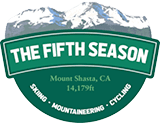[fusion_builder_container hundred_percent=”no” equal_height_columns=”no” menu_anchor=”” hide_on_mobile=”small-visibility,medium-visibility,large-visibility” class=”” id=”” background_color=”” background_image=”” background_position=”center center” background_repeat=”no-repeat” fade=”no” background_parallax=”none” parallax_speed=”0.3″ video_mp4=”” video_webm=”” video_ogv=”” video_url=”” video_aspect_ratio=”16:9″ video_loop=”yes” video_mute=”yes” overlay_color=”” video_preview_image=”” border_color=”” border_style=”solid” padding_top=”” padding_bottom=”” padding_left=”” padding_right=”” type=”flex”][fusion_builder_row][fusion_builder_column type=”1_1″ layout=”1_1″ background_position=”left top” background_color=”” border_color=”” border_style=”solid” border_position=”all” spacing=”yes” background_image=”” background_repeat=”no-repeat” padding_top=”” padding_right=”” padding_bottom=”” padding_left=”” margin_top=”0px” margin_bottom=”0px” class=”” id=”” animation_type=”” animation_speed=”0.3″ animation_direction=”left” hide_on_mobile=”small-visibility,medium-visibility,large-visibility” center_content=”no” last=”true” min_height=”” hover_type=”none” link=”” border_sizes_top=”” border_sizes_bottom=”” border_sizes_left=”” border_sizes_right=”” first=”true” type=”1_1″][fusion_text columns=”” column_min_width=”” column_spacing=”” rule_style=”default” rule_size=”” rule_color=”” content_alignment_medium=”” content_alignment_small=”” content_alignment=”” hide_on_mobile=”small-visibility,medium-visibility,large-visibility” sticky_display=”normal,sticky” class=”” id=”” font_size=”” fusion_font_family_text_font=”” fusion_font_variant_text_font=”” line_height=”” letter_spacing=”” text_color=”” animation_type=”” animation_direction=”left” animation_speed=”0.3″ animation_offset=””]
Backcountry Skiing & Riding
You want backcountry skiing and riding? Well, we’ve got it. With a summit height at 14,162 feet, Mount Shasta is the second tallest among the Cascade Range volcanoes. The backcountry season here is mind blowing and can last well into early summer with the harvesting of fresh corn. You can go big on Mount Shasta – ski and board descents from the summit are a worthy goal. At the same time, you can spend a morning touring up to the cabin then to one of the bowls where you can make lap after lap.
While Mount Shasta is prime for backcountry adventures, there are plenty of other mountains around us. If you’re an experienced skier or rider, you’re going to love it here. Heading out on Mount Shasta, up to Castle Lake or out into the Eddy Mountains requires skill and knowledge. If you don’t have sufficient know-how, don’t go. Instead, focus on building your skills so you can get out there. Read below to learn more about enjoying our winter backcountry destinations, guided trip options and how to build your skills.
Backcountry skiing and riding – places to go:
Mount Shasta
- Everitt Memorial Highway provides winter access from Mt. Shasta City to the Bunny Flat trailhead. Check road conditions to be sure it’s open, as it can take a few days after a storm for the road to get plowed. Make sure your vehicle can handle the road conditions, a plowed road doesn’t necessarily mean it’s a snow-free surface.
- Always check the Mt. Shasta Avalanche Center’s avy and weather forecast before you go and know how to assess the snow conditions.
- Conditions can change quickly. Go prepared and have the right gear.
- If you’re going above 10,000 feet you will need a Mt. Shasta Summit Pass from the Forest Service. You can pick one up at The Fifth Season, the Mt. Shasta Ranger Station or self-serve at Bunny Flat trailhead.
Castle Lake
The road to Castle Lake is not the first plowing priority, so it can be hit or miss when it comes to finding it open after a storm. When accessible, left of the lake has steeper terrain, right of the lake is more moderate. Be sure to carry avy gear and know how to read the snow.
The Eddys
While the Eddy’s have amazing backcountry terrain, they are difficult to access. Lower elevations can be accessed via South Fork Road and Parks Creek Road, but these are only plowed a short way. Deeper access requires a snowmobile or a long approach. Due to the access issues and terrain, this is a destination for experienced backcountry travelers.
If you want to know more about skiing or riding at Castle Lake or The Eddys, stop by the shop to talk with us.
Resources
- Rentals: Get your gear from us. We’ve got AT/randonee and splitboard packages. You can also rent things you’ll need for a well-prepared, safe backcountry outing like transceivers, shovels, probes and ski packs.
- Boot fitting: If you’re an avid skier or rider and your feet just aren’t comfortable in your boots, you need to see our professional, experienced boot fitters. Boot fitting is an art and a science that can make your life better. Who needs cramped toes, stinging feet, aching arches or blisters when you’d rather be out skiing or riding on the slopes?
- Tuning services: And while you’re at it, if you’re heading into the backcountry, get you’re your equipment tuned up and ready for the current conditions.
Build your skills
Heading into the backcountry is a serious undertaking, and if you’re not quite ready to do it on your own yet, there are professional guide services who can get you out there safely while building your skill set.
- Shasta Mountain Guides offers trips ranging from summit descents, to multi-day ski or board outings, to lower elevation day tours. Their ski and board mountaineering seminar will take you on a trip of a lifetime. If you’re too new for a summit trip, they offer an Introduction to Backcountry Skiing/Boarding option that will help get you get started. Check them out for high quality services.
- Mt. Shasta Tour Guide offers day ski and board tours that include educational components. Robin skis a ridiculous number of days each year and offers half day (4 hours) and full day (7 hours) tours.
- SWS California Ski Guides also offers multi-day ski touring trips on Mt. Shasta with camping and summit options.
- Mt. Shasta Avalanche Center offers free seminars once a month to get you familiar with assessing snow conditions and using avy safety equipment.
Things to consider
- Take a buddy -– it is safest not to ski or ride in the backcountry alone
- Know how to assess snow conditions
- Wear an personal locator device/ avalanche transceiver, know how to us it
- Have your avy safety equipment, know how to use it
[/fusion_text][/fusion_builder_column][/fusion_builder_row][/fusion_builder_container]

